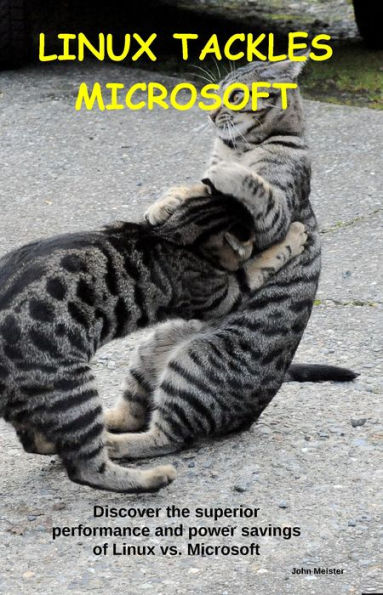Tests in this book show the performance differences of Linux vs. Microsoft Windows, XP, 7, 8, 8.1 and 10.
On a Dell D630 (4gb Memory) Linux took 33.6 seconds to run a test, Win 10 took 333.583 seconds,
that means on a D630 that Linux is 8.9x's faster than Microsoft Windows 10.
UPDATED TESTS: (21 Jan 2015)
On a Dell T3610 (16GB memory) Linux took 4.2 seconds to run the same test, Win 10 took 149.1 seconds... meaning that Linux is 34.2 x's faster than Win 10 on the same, newer hardware...
This book documents tests and analyzes performance and power consumption. It discusses interoperability and ways of making both Linux and Microsoft work together, providing users greater flexibility. While many seem interested in better performance and reducing the costs associated with power consumption, the question comes up, how do you quantify the differences? Those topics are addressed as we examine performance differences on a single system, and what the power differences are between operating systems as examined on multiple systems. Chapter 3 analyzes the power differences between the operating systems as exhaustively tested on multiple systems as part of a graduate research project. There is a batch file and a shell script provided in Chapter 2, along with the spreadsheet formulas to calculate the total time for comparison between the two operating systems. Chapter 2 will provide the most useful and repeatable tools for quick comparison tests. The use of a Live CD or USB drive will allow a casual user to see the differences on the same hardware.
Tests in this book show the performance differences of Linux vs. Microsoft Windows, XP, 7, 8, 8.1 and 10.
On a Dell D630 (4gb Memory) Linux took 33.6 seconds to run a test, Win 10 took 333.583 seconds,
that means on a D630 that Linux is 8.9x's faster than Microsoft Windows 10.
UPDATED TESTS: (21 Jan 2015)
On a Dell T3610 (16GB memory) Linux took 4.2 seconds to run the same test, Win 10 took 149.1 seconds... meaning that Linux is 34.2 x's faster than Win 10 on the same, newer hardware...
This book documents tests and analyzes performance and power consumption. It discusses interoperability and ways of making both Linux and Microsoft work together, providing users greater flexibility. While many seem interested in better performance and reducing the costs associated with power consumption, the question comes up, how do you quantify the differences? Those topics are addressed as we examine performance differences on a single system, and what the power differences are between operating systems as examined on multiple systems. Chapter 3 analyzes the power differences between the operating systems as exhaustively tested on multiple systems as part of a graduate research project. There is a batch file and a shell script provided in Chapter 2, along with the spreadsheet formulas to calculate the total time for comparison between the two operating systems. Chapter 2 will provide the most useful and repeatable tools for quick comparison tests. The use of a Live CD or USB drive will allow a casual user to see the differences on the same hardware.

Linux Tackles Microsoft: Discover The Superior Performance And Power Savings of Linux Vs. Microsoft

Linux Tackles Microsoft: Discover The Superior Performance And Power Savings of Linux Vs. Microsoft

Product Details
| BN ID: | 2940046506358 |
|---|---|
| Publisher: | John E. Meister, Jr |
| Publication date: | 12/30/2014 |
| Sold by: | Smashwords |
| Format: | eBook |
| File size: | 2 MB |
